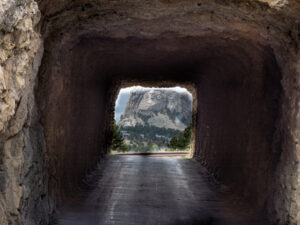Introduction: A Journey Through America’s Natural Wonders
As part of my 30-day road trip across the United States, I set out to explore some of the country’s most stunning and iconic landscapes. From the colorful spires of Badlands National Park to the snow-capped peaks of the Grand Tetons, each destination has offered a unique glimpse into the natural beauty of America. One particularly unforgettable stop was Devil’s Tower National Monument in northeastern Wyoming—a destination that combines geological wonder, cultural depth, and jaw-dropping scenery.
📸 Looking for more from this journey? Click here to read other stops on the trip.
What Is Devil’s Tower?
Devil’s Tower, also known as Bear Lodge by many Indigenous peoples, is a striking monolith rising 867 feet from its base and over 1,200 feet above the surrounding plains. This igneous formation was the first U.S. National Monument, designated by President Theodore Roosevelt in 1906.
I first discovered Devil’s Tower while watching a Smithsonian Channel documentary. Instantly captivated, I knew it had to be part of our cross-country road trip itinerary.
A Geological and Cultural Marvel
Seeing Devil’s Tower in person is a powerful experience. Its columnar basalt formations make it one of the most unique natural features in North America. But it’s more than just a geological wonder—it holds deep spiritual significance for many Native American tribes, including the Lakota, Cheyenne, and Kiowa.
🎯 Travel Tip: Visit the visitor center to learn about the Native legends and scientific theories behind the tower’s formation.
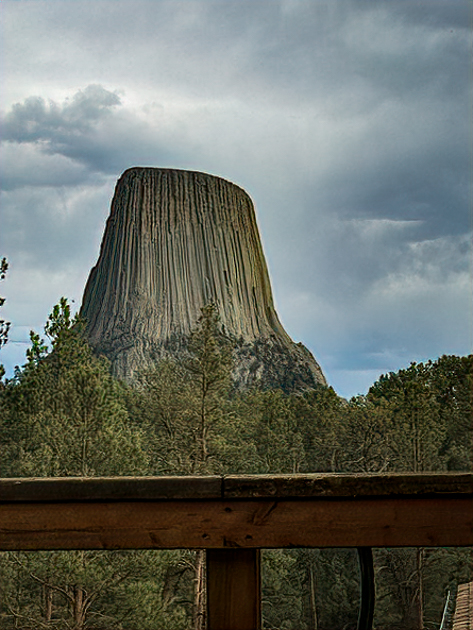
Capturing Devil’s Tower Through the Lens
Daylight Views: A Landscape Painter’s Dream
As I approached, I could see the tower from nearly 13 miles away, standing proudly above the rolling plains. The surrounding golden wheat fields danced in the breeze, creating a striking contrast with the tower’s dark rock face—a truly picture-perfect moment.
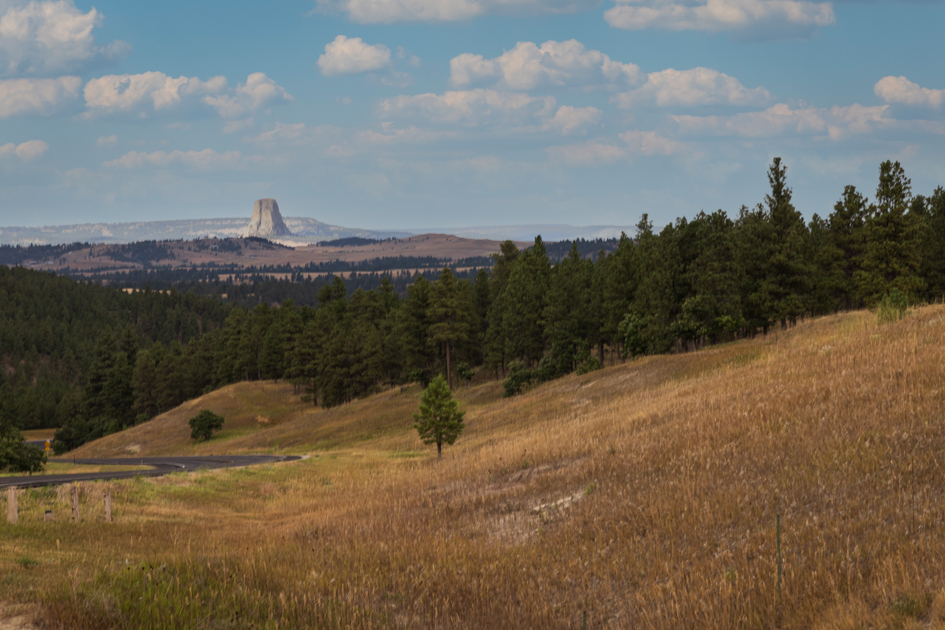
Night Photography: Stars and Stillness
As the sun set, I prepared for a night photography session. With the tower silhouetted against a star-studded sky, I captured long-exposure shots that brought out the texture of the rock and the quiet magic of the moment. The silence, broken only by the wind, made this one of the most memorable photo ops of the trip.
One of the best ways to explore Devil’s Tower is by hiking the 1.3-mile Tower Trail that loops around its base. The trail offers changing perspectives of the formation and winds through forests, meadows, and rocky outcroppings.
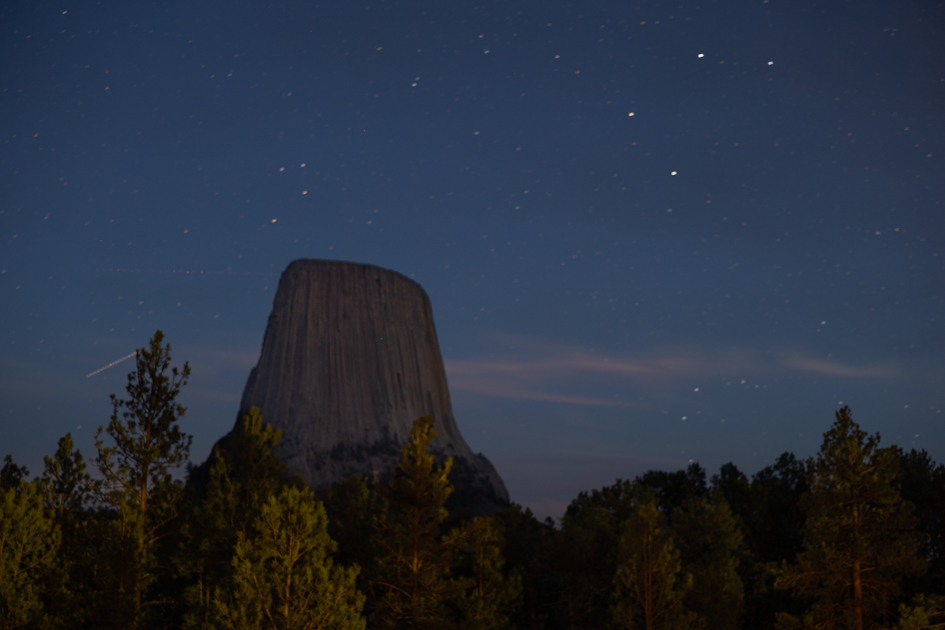
Hiking the Trail Around Devil’s Tower: Scenic Views and Wildlife Encounters
Hiking the loop trail around the base of Devil’s Tower was an unforgettable experience. This well-maintained path offers a 360-degree view of the iconic rock formation. Each turn reveals unique angles and dramatic perspectives. It is perfect for photography and nature lovers. The trail winds through shady forests and open clearings. This makes it easy to stop and enjoy the surrounding beauty.
As I made my way around the monument, I was treated to the peaceful sight of mule deer grazing quietly along the trail. Their calm presence added to the tranquil atmosphere, reminding me of how rich and alive this landscape truly is. The interplay of light and shadow throughout the hike created ever-changing scenes—ideal for capturing that perfect shot or simply enjoying the moment.
Whether you’re a hiker, wildlife enthusiast, or landscape photographer, the Devil’s Tower hiking trail offers an immersive experience that connects you deeply with nature and the unique geology of northeastern Wyoming.

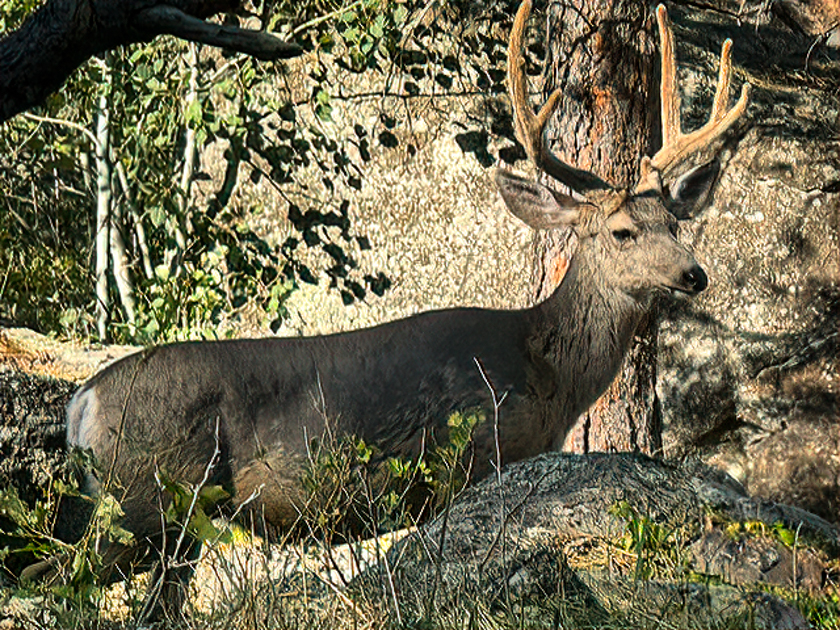
Honoring Indigenous Traditions: The Prayer Ribbons
As I walked the trail, I saw colorful prayer ribbons tied to trees. Indigenous visitors left them as symbols of hope, blessings, and spiritual reverence. Signs ask visitors not to photograph these sacred objects, a request I fully honored.
🙏 Respecting these traditions reminded me that travel is not just about what we see, but how we engage with the stories behind the places we visit.
A Rock Climber’s Dream
Devil’s Tower is a world-renowned rock climbing destination. I watched climbers ascending its sheer walls, their movements deliberate and graceful. Many shared stories of the challenge and spiritual connection they felt while climbing here.
🧗 Note: Climbing is discouraged in June out of respect for Native cultural observances.

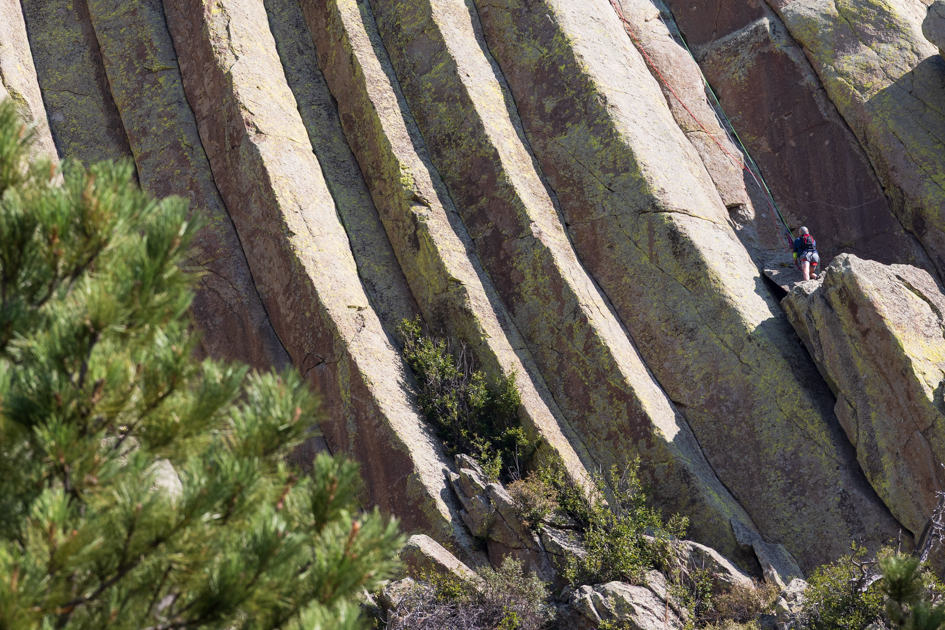
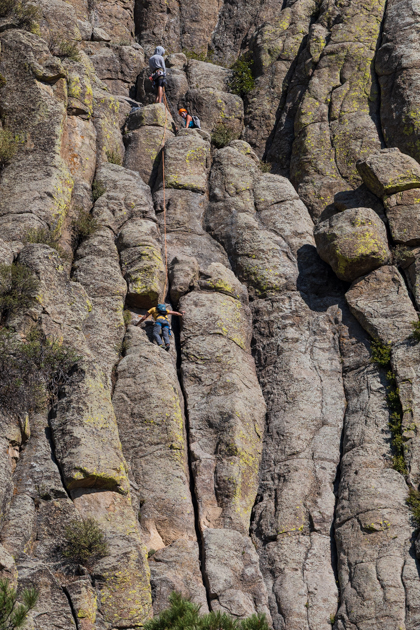
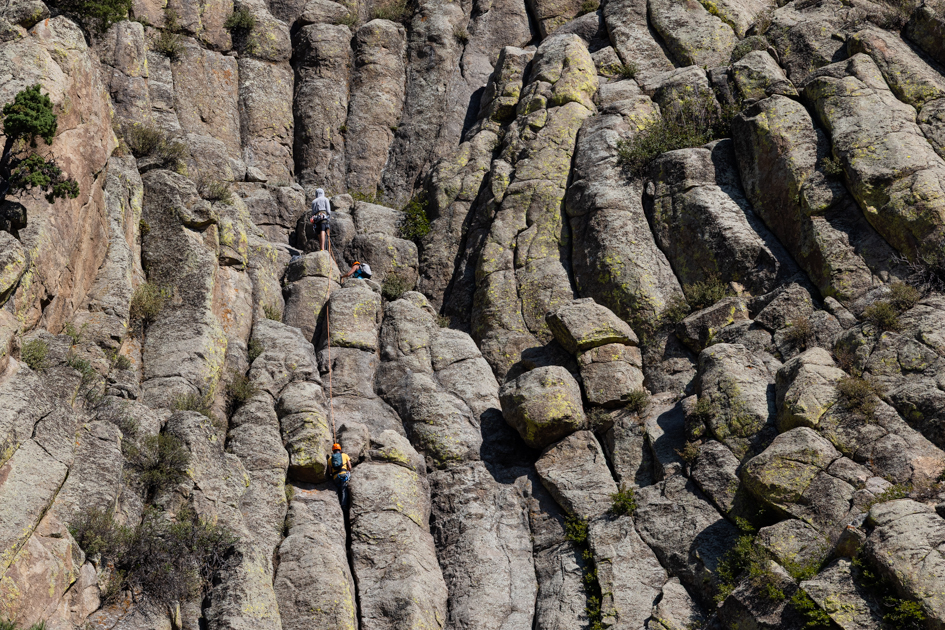
My Connection to Devil’s Tower
By the end of the day, I felt deeply connected to this place. From the dramatic views and rich history to the peaceful encounters with wildlife, every moment at Devil’s Tower was awe-inspiring.
It’s a destination that speaks to both the adventurer and the story-seeker in all of us.
Where to Stay
During our visit to Devil’s Tower National Monument, we stayed at Devil’s Tower Lodge. It is a charming and rustic bed and breakfast just outside the park. Surrounded by pine trees, the lodge offers stunning views of the iconic rock formation. It provided a peaceful and scenic base for exploring the area.
One of the most memorable parts of our stay was meeting Frank Sanders, the legendary rock climber who first summited Devil’s Tower in 1972. Frank, who founded the lodge as both a guide service and a haven for fellow climbers, warmly welcomed guests with stories from his decades of climbing experience. He shared incredible photos and personal insights that brought the history and spirit of Devil’s Tower to life. That night, we settled into our cozy room. Outside, a lawn full of tents stretched out. Each tent belonged to climbers preparing for their next ascent. It was a unique and inspiring place to stay, deeply connected to the climbing community and the tower itself.
Here are a video and article on Frank Sanders if you would like to learn more.
Final Thoughts: Why Devil’s Tower Belongs on Your Road Trip
Devil’s Tower is more than just a stop on the map—it’s a profound experience that blends natural wonder with cultural richness. Whether you’re a hiker, photographer, climber, or simply someone seeking inspiration, this monument will leave a lasting impression.
📍 Plan Your Visit
- Location: Northeastern Wyoming
- Best Time to Visit: May to October
- Activities: Hiking, photography, rock climbing, cultural education
- Respectful Practices: Honor prayer ribbon areas, follow Leave No Trace principles

